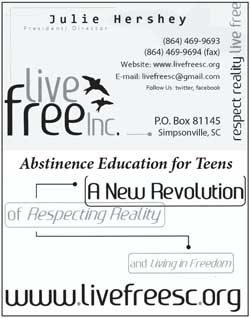In determining the probability of abiogenesis occurring it is necessary to break the problem into at least two parts, there may be more, but it always helps to be as generous as possible on this topic because it gives evolutionists less wiggle room. These two parts are the probability of getting the necessary pieces in the same place and time and the odds of getting it assembled into a functioning living cell. Limiting it to these two steps is being extremely generous. This is because as you add steps the probability against it goes up exponentially.
Abiogenesis is a big problem for evolutionists
Abiogenesis is a major problem for evolutionists simply because universal common descent evolution is a non-starter unless you can get that first cell. They will frequently claim things like the Yuri Miller experiment as well as other experiments used to produce amino acids and other components of a living cell, but they either do not work under realistic conditions or they do not produce the levels of purity necessary to be viable for successive steps in the process.
Evolutionists will frequently act as if abiogenesis is no big deal, and just a matter of time before it is proven. This is particularly common among those that do not actually work in related fields of biology. Besides the fact that such a claim takes a lot of blind faith, it is ultimately nothing more than wishful thinking.
Furthermore, when presented with the difficulties that demonstrate that it is actually impossible, they will charge you with being ignorant or any number of other pejoratives. And yet when these problems are brought up even if they suggest some possible answers, the alleged answers are never demonstrated to overcome the problems. They are pretty much used as crutches to give the faithful hope against a process that they need but is actually statistically, thermodynamically and chemically impossible.
A minimalistic living cell
Trying to discover what the minimum possible living cell is, biologists stripped down a cell and its genome to the absolute minimum that they could without killing it. This gives us real evidence as to what the simplest possible cell that is not a parasite would actually be like. It has the effect of silencing the claim that cells were simpler in the past because here we have evidence that this is as simple as a cell can be without being parasitic. Going to parasitic bacteria would not help because they would need a host cell that is at least as complex as this minimum.
Being given the magnificent and highly imaginative name of JCVI-Syn3.0, this artificial species has a genome that has been reduced to the bare minimum necessary to survive. This minimal genome consists of just 531,490 base pairs with just 438 protein-coding genes.
A genome of this length is sufficiently large to house the DNA proteins of an average length of more than 500 amino acids. However, wanting to give abiogenesis as good of a chance as possible let’s assume that the average protein length is just 50 amino acids. Furthermore, we are going to assume a billion potentially functional proteins which are actually two orders of magnitude above the 10 million or so that are thought to be all that is used by life on Earth. This artificially raises the number of viable proteins to select from, once again to give abiogenesis the best possible chance to be shown workable.
The odds of getting all the proteins necessary for a minimal living cell.
Now because every amino acid is encoded by three base pairs, a 50 amino acid protein would require 150 base pairs consisting of 4 possible nucleotides resulting in 4150 or 2X1090 possible combinations, this means that the odds against getting any particular protein encoded by the DNA are 1 in 2X1090 or 1 in 5.75X1086. However, you have to do this 438 times resulting in the odds of encoding all of the amino acids being 1 in 5X1038,000.
Now given that a single protein consisting of just 50 amino acids, of which there is a possibility of 20 amino acids that can be used, there are 2050 or1.259X1065 possible combinations. Given our highly exaggerated assumption of a billion functional proteins, the odds of getting a functional protein of 1 in 1.259X1056. Now if each protein is used for only four enzymes or other structures, by proper folding then we need a total of 438 X 4 or 1932 proteins. This results in the odds of getting the necessary proteins of 1 in (1.259X1056)1932 or 1 in 1.777x10108,385.
When this is combined with the odds of getting the DNA for all the proteins as well, we get odds of 1 in 5X1038,000 X 1.77X10108,385 or 1 in 8.885X10146,385. This shows that the odds of getting just this much are statistically impossible, and it doesn't include further assembly of the various proteins into a functioning system.
The odds of assembling a living cell once you have the components
Now Fred Hoyle estimated that the odds of assembling a living cell from its basic components by chance are around 1 in10 40,000. Comparing the process to a tornado tearing through a junkyard and forming a functional Boeing 747. Evolutionists naturally dispute this figure. However, this is still actually the best estimate that I have seen. The only alternative is 1 in 101000 and it is actually just setting a minimum possibility. However, because we want to give abiogenesis the best possible chance in this discussion, we will go with the 1 in 101000 figure.
The combined odds of assembling a living cell and its components
Before we get into these figures we have to establish a new notation that not everyone may be familiar with. It is most commonly used in places where you cannot use an upper script to indicate an exponent it uses the “^”. In such cases 100 = 102 = 10^2. As a result the odds of getting the components necessary for a living cell are about 1 in 8.885 X 10^146,385 and the odds of getting them assembled in the right way or1 in 10^1000. This means that the odds of forming a living cell from its basic component such as amino acids comes to 1 in 10^10008.858X10^146,385.
This simplifies to1 in 108.885*10^146,388. Now remember this is more likely than not to be a huge underestimation of the odds against abiogenesis occurring. We know far more about how living cells work than was known when Fred Hoyle made his estimate, and we deliberately used the minimal possibility. So ultimately this is probably an underestimation, however regardless, it is essentially 0.
Counter arguments
While it is true that evolutionists do have some counter arguments to the issue of statistics, none of them really demonstrate the argument to be wrong. The requirement of any legitimate counter argument to statistics against abiogenesis or anything else for that matter is to be able to demonstrate that you are proposing a mechanism that is actually capable of doing the job. This has never actually been done.
Complete dismissal: The most common counter argument or response to raising the question of the probabilities involved in abiogenesis occurring is complete dismissal. In most cases evolutionists will simply dismiss any calculations. In some cases, their excuse for dismissing them is that probabilities are irrelevant to something that has already happened. While that is true it presupposes that abiogenesis is how life got started and not direct creation by a highly intelligent God.
This response is literally nothing but an act of blind faith that the answer is out there, and that it has to be possible precisely because it's the only alternative to God. The problem here is that it does not even attempt to offer an explanation for how the odds are overcome, it simply assumes that somehow they were. Pretty much, it is the idea that it must be fairly easy given the right conditions because after all it happened here on Earth. It ignores the entire point that at least naturalistically it could not have happened here on Earth.
Chemistry is not completely random: While this is technically true, the problem is that the relevant chemistry is completely random. There is nothing within the chemistry that favors functioning proteins over junk proteins. It is only the information contained in DNA that allows specific proteins to be produced, and then they have to be specifically folded in order to do their job. After that they need to be located to where they are needed to do their job. None of this is dictated by chemistry.
Furthermore, the actual biochemistry that we have done shows that whenever we get the components necessary for producing a living cell, the purity of those components is highly lacking. In other words, there are trace amounts amongst a lot of junk that without extensive filtering, such as the situation that would exist in nature, those components would be quickly destroyed. They also have a rather short half-life when working with other chemistry because they tend to get broken down.
The point is that while chemistry is not completely random, there is not within it a mechanism sufficient for overcoming the odds that are necessary for abiogenesis to be even remotely possible. In fact, I've never seen any attempt to demonstrate that any additional chemistry exists that is capable of solving the problem. Once again if you want to argue that there is a solution demonstrate the fact that it overcomes the odds against it occurring. The problem is that all they ever actually do is claim that it works as if that is sufficient despite the fact that it isn't.
A non-specific selection process: ironically one of the best responses is one that mimics the evolutionary process necessary for universal common descent. The problem is that they have no such mechanism in a prebiotic world. Once you have life, then you at least have some opportunity for a selective process to occur to adapt that life to its environment. The major problem with this suggestion is that they never actually offer a specific mechanism, let alone one that could be demonstrated to overcome the tremendous odds that need to be dealt with.
While hypothetically such a selection process would be possible, not only is there absolutely no evidence that such a process exists in a prebiotic world. It would also have to be contrary to the evolutionary idea that there's nothing in the process that has any goals or direction. Such a selection process would need to be specifically set up for the express purpose of producing a living cell. In fact, it would have to be so specific that it would require an intelligent designer. Now this is great for the theistic evolutionary crowd, but the atheists who run the scientific establishment would reject anything specific enough to even remotely imply an intelligent designer.
Life was simpler in the past: this response is automatically answered by the fact that we are already dealing with the simplest known possible cell. Getting a cell with a high enough probability of it occurring to occur just once in the history of the universe, would require reducing the cell to 14 proteins with the length of just 8 amino acids. This of course is impossibly simple, but it makes the point that simply saying that life was simpler in the past doesn't solve the problem.
RNA World: RNA world doesn't actually solve any of the problems. All it does is provide an alternative way of producing the information necessary for living cells other than DNA. It ignores the fact that RNA is too unstable to serve as a long-term information storage system, which is why existing cells use it only for transmission purposes.
Ultimately none of these responses do anything more than give the person making the response and excuse for dismissing the tremendous odds against abiogenesis actually occurring. The simple fact is that evolutionists in general and atheists in particular, need a totally naturalistic origin for life. It is an absolute necessity for their entire Big Bang to man mythology. Furthermore, abiogenesis serves as a tremendous gap in this mythology. It's not just a relatively tiny hole between major types of animals, or even the fact that 99.9% of the species that they need to have existed have no evidence other than evolutionary necessity. This is a whopper of a gap that is a huge hole in their entire mythology, that they are desperate to fill, because the necessity of producing at least the first living thing is a major argument in support of an intelligent designer, and specifically God.
Why more likely than not there is no solution.
The number one reason why there is most likely no solution to this dilemma from a purely naturalistic perspective is that any mechanism capable of overcoming these tremendous odds would have to be so specific that intelligent design is the only possible explanation. Furthermore, once you reach the point where an intelligent designer becomes acceptable, then there is no need for the rest of the mythology. This is because your entire perspective on the evidence changes, once God is allowed into the picture.
The other aspect that indicates that there will never be a solution is the fact that there is more likely than not no real effort being made to solve it. This is because most evolutionists are so dismissive of the probabilities against abiogenesis occurring that they're not even going to look for a solution let alone find one.
Furthermore, any solution would have to be capable of overcoming not just these statistical problems, but thermodynamic and chemical problems as well. The simple fact of the matter is that the energy that gets applied to these systems in nature tends to be high in entropy, meaning that their application to a lower entropy system will increase that system's entropy. They also need to overcome the problem of the lack of purity in the biochemicals produced. Without a way of solving this problem you will never get the concentration of amino acids to form even a single simple protein let alone the minimum proteins needed for a living cell.
Conclusion.
In conclusion, when evaluating the statistical problem of abiogenesis, the odds against it occurring get very high very quickly. Even the simplest possible conditions very quickly result in odds there are so astronomically high against it that the probability is effectively 0.
In any other area of science such an impossible idea would have been dismissed long ago. In fields such as archaeology and forensics, they would conclude intelligent agency. The only thing that prevents an intelligent agent being accepted as the source for the origin of life is that it has already been rejected regardless of the evidence or the impossibility of abiogenesis occurring. The sad fact is that the scientific establishment is run largely by atheists, or those trained to think like atheists when doing science. As a result, to these people the probabilities are irrelevant, and they usually demonstrate this by summarily dismissing any probability calculations. This is despite the fact that no process has ever been demonstrated, other than an intelligent agent, to overcome such insanely high in probabilities.
----------------------------
https://www.timesexaminer.com/charles-creager-jr/11687-abiogenesis-a-thermodynamic-impossibility
https://www.youtube.com/@DrJamesTour












